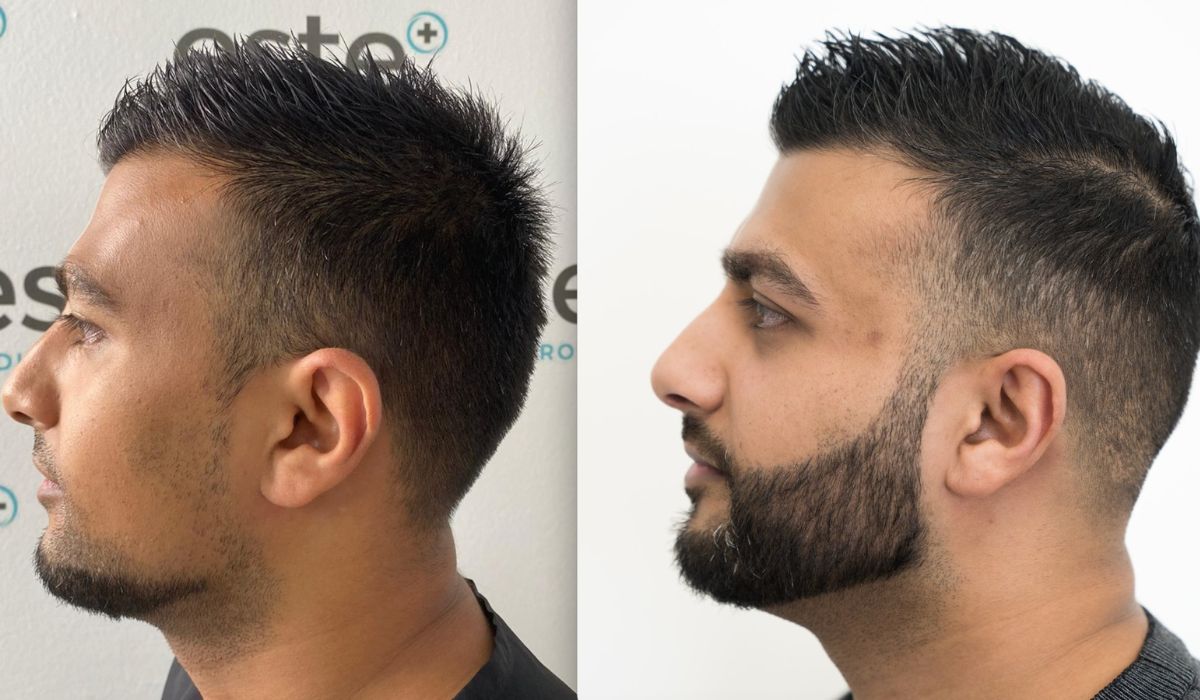Beards have traditionally been seen as a sign of sophistication and manliness. Unfortunately, not everyone is born with a thick, full beard. Patchy or sparse facial hair is a common problem for males and can have a negative impact on their sense of masculinity and self-worth. Beard transplants have increased in favour in recent years as a way to achieve a fuller, more masculine beard. In this post, we’ll delve into the fascinating topic of beard transplants, exploring its history, benefits, and frequently asked questions.
What is a Beard Transplant?
The Science Behind It
Surgically transferring hair follicles from one area (usually the back of the head) to another, a beard transplant is a form of facial hair transplantation. These transplanted hair follicles then develop into full beards or moustaches.
Understanding the Procedure
Extraction of donor hair, graft preparation, and precise placement on the recipient area are all necessary stages of the beard transplant technique. A skilled surgeon is crucial for a positive outcome.
Who is a Suitable Candidate?
Thin Beard Woes
Beard transplants are ideal for men who were born with sparse facial hair. They may be able to get the desired amount of facial hair with this technique.
Beard Reconstruction
Scarring from accidents or surgeries might prevent a person from growing a beard, but a beard transplant can provide a reconstructive alternative.
Benefits of a Beard Transplant
Enhanced Confidence
The confidence of a man can be greatly increased by growing and maintaining a long beard. After the treatment, many patients report feeling more confident and appealing.
Natural Look
Beard transplants have several benefits, but one of the most notable is the natural look they provide the recipient. The transplanted hairs look quite natural among the rest of the facial fuzz.
Permanent Results
When hair follicles are transplanted, they take root and continue to grow for the rest of the recipient’s life.
The Procedure: Step by Step
- Consultation: An experienced surgeon will first speak with you to learn more about your beard goals and discuss the specifics of the operation.
- Donor Area Selection: The donor location is located (usually at the back of the head), and the surgeon makes sure there are enough hair follicles to perform the transplant.
- Local Anesthesia: Local anaesthesia is given before the transplant begins to make sure you don’t feel anything.
- Hair Extraction: Donor hair follicles are carefully removed from the scalp.
- Graft Preparation: Hair follicles are removed and then sterilised in preparation for transplantation.
- Implantation: The hair follicles are implanted in the recipient area by the surgeon using precise procedures.
- Post-Procedure Care: Care during recovery and after surgery is essential for a positive outcome.
What to Expect After a Beard Transplant
- Initial Redness and Swelling: Redness and swelling are normal immediately after the treatment, but they usually go away within a week.
- Hair Shedding: Hair loss after a hair transplant is common and should be expected. Then, your hair will begin to regrow.
- Fuller Beard: The transplanted hairs will eventually mature into a thicker beard, although it will take some time.
Conclusion
If you want a thicker, more appealing beard, a beard transplant could be the best decision you ever make. You may have the beard of your dreams with the right surgeon and some TLC. A beard transplant can improve your self-esteem, your looks, and your life in general.
Frequently Ask Questions (FAQs)
Is a beard transplant painful?
No, local anaesthesia is used so that you don’t feel anything while the surgery is being done.
How long does it take for the transplanted beard to fully grow?
Growth is usually noticeable after a few months, with the entire effect appearing within a year.
Are there any risks or complications associated with beard transplants?
The dangers are low if the surgery is performed by an experienced doctor, but they do exist as with every operation.
Can anyone get a beard transplant?
Consultation with a surgeon is necessary to determine eligibility, however most men with sparse or patchy beards are good candidates.
Are the results of a beard transplant permanent?
Permanently implanted hairs will continue to grow in the same manner as your own facial hair.











